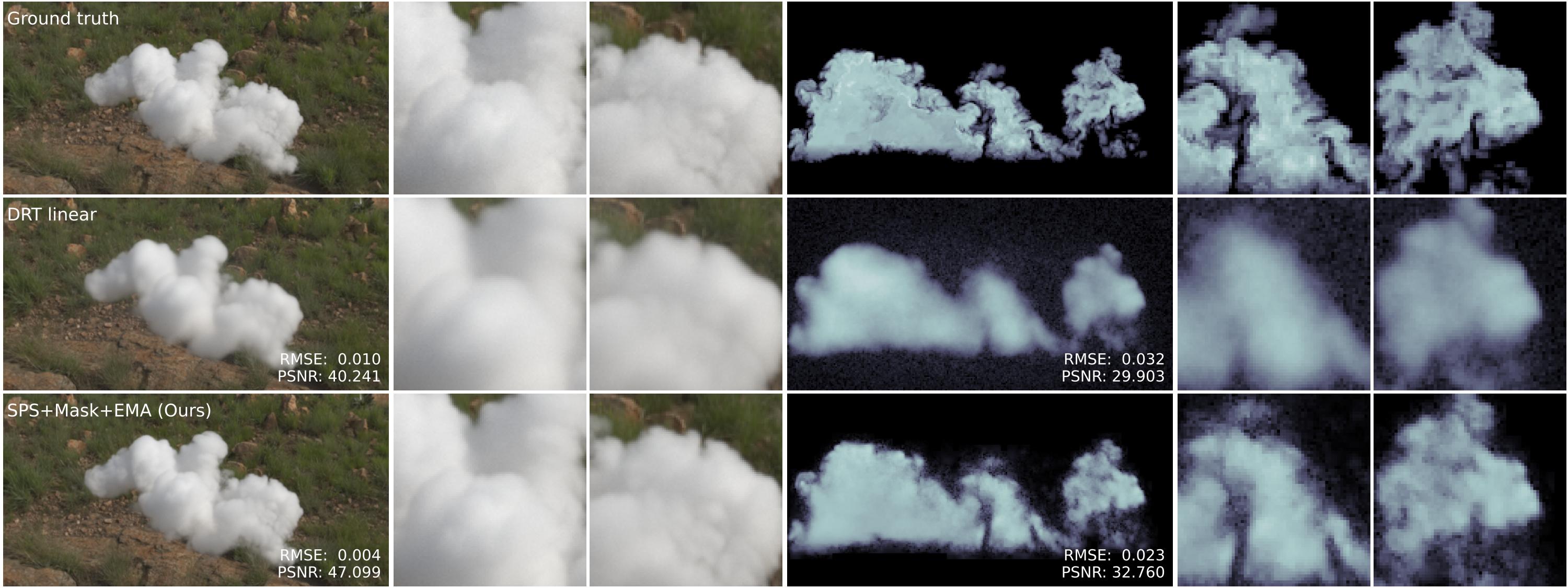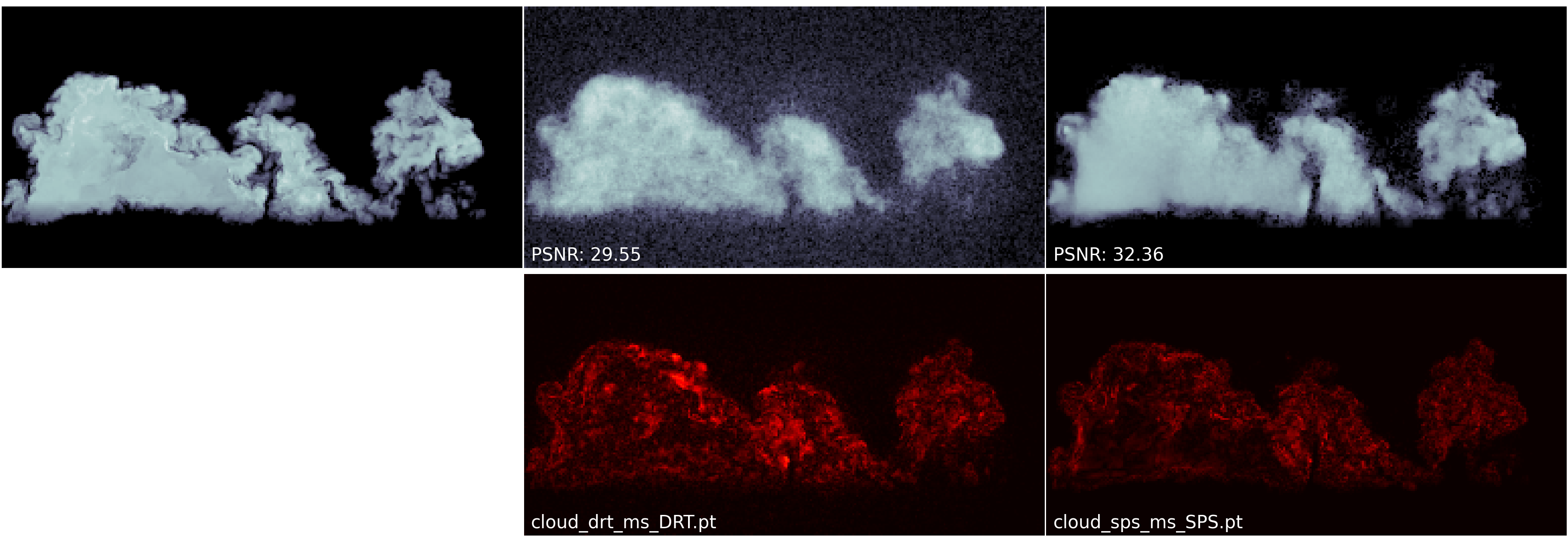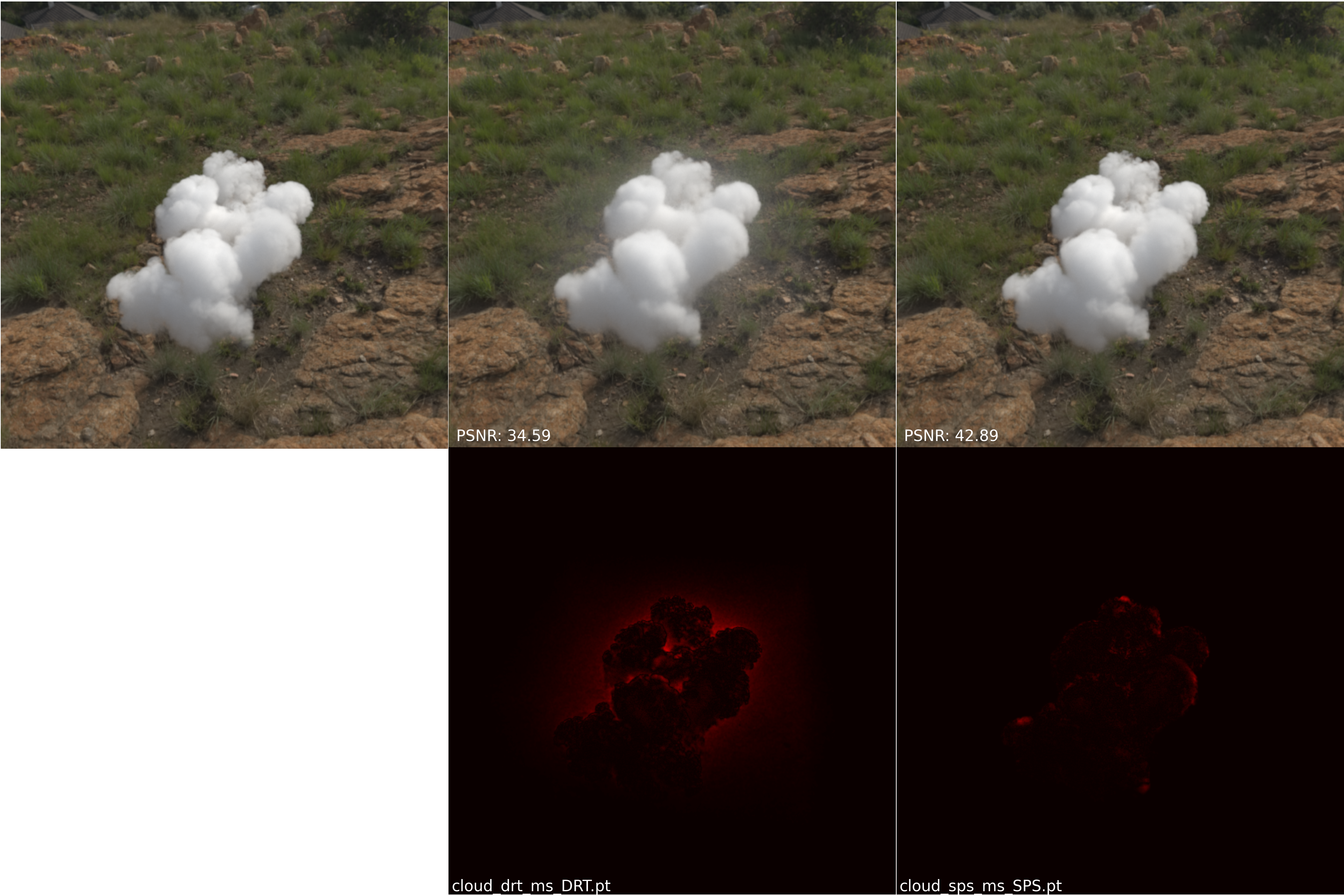Ludwig Leonard and Rüdiger Westermann
Technical University of Munich
| Paper Online
| PDF |

This repository contains the official authors implementation associated with the paper "Image-based Reconstruction of Heterogeneous Media in the Presence of Multiple Light-Scattering".
This project is under MIT License. If you found this project useful for your research please cite:
@article{leonard2024image,
title={Image-based reconstruction of heterogeneous media in the presence of multiple light-scattering},
author={Leonard, Ludwic and Westermann, R{\"u}diger},
journal={Computers \& Graphics},
volume={119},
year={2024},
publisher={Elsevier}
}This repository is part of the rendervous project and requires the rendervous library.
git clone https://github.com/rendervous/rendervous You can generate a synthetic dataset from a volume saved as a tensor.
In folder data there is an example of a volume compressed (cloud_grid.zip) and a HDR environment (environment00.zip).
Decompress at the root of data.
Execute the script generate_dataset.py.
It takes around 01h15m in a GTX 3090 (preview images will be shown during the process).
The file cloud_dataset.pt should have be saved in the created folder datasets.
The dataset contains the rendering for 80 different camera poses of 512x512 pixels, with 16K spp.
The baseline of our method is the sampling strategy implemented in Unbiased Inverse Volume Rendering With Differential Trackers by Merlin, et al.
Executing the script reconstruct_ms_DRT.py we get the reconstruction using the aforementioned technique.
The constant BW_TECHNIQUE represents the sampling strategy used for the gradient propagation through the path.
- DRT: Differentiable Ratio-tracking
- SPS: Our Singular Path Sampler
- DRTDS: The defensive sampling used in DRT
- DRTQ: DRT in its quadratic form.
- DT: Vanila Delta Tracking without defensive strategy.
All these techniques can be tested in a pipeline that progressively reconstruct a medium from a coarse resolution to the final. Using 10K iterations distributed among 4 levels.
The final reconstruction can be found at folder
f'./reconstructions/{DATASET}_drt_ms_{BW_TECHNIQUE}.pt'The proposed pipeline in our paper requires an initial reconstruction with a Absorption-Emission model first.
The difference with the proposal in DRT is that our emission field relax in-scattered light in anisotropic case by using a Spherical Harmonics grid.
In order to generate such reconstruction has to be executed the script reconstruct_ae.py. After this, a file at
f'./reconstructions/{DATASET}_ae_{SH_LEVELS}.pt'contains the reconstructed field of densities and emissions. Our SPS pipeline will only make use of the densities.
Executing reconstruct_ms_SPS.py we reconstruct now using the three components proposed in our paper.
- An initial density from a relaxation of the in-scattering radiance.
- The singular path sampler.
- An exponential moving average to enhance the primal computation and avoid deviated gradients.
The final reconstruction can be found at folder
f'./reconstructions/{DATASET}_sps_ms_{BW_TECHNIQUE}.pt'The script eval_reconstructions.py allows to compare two reconstructions with respect to a reference volume and image.


